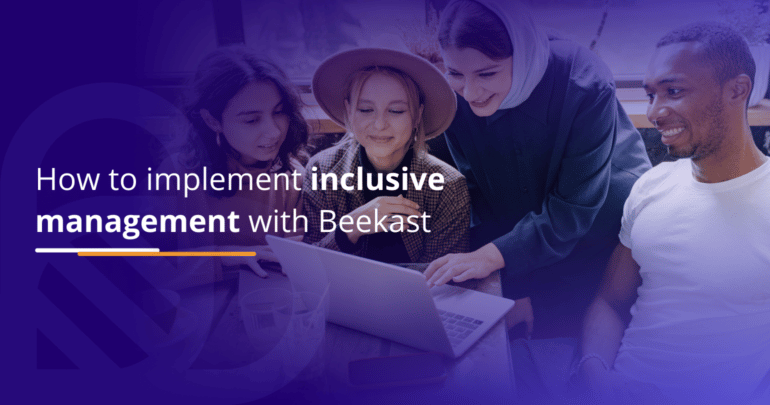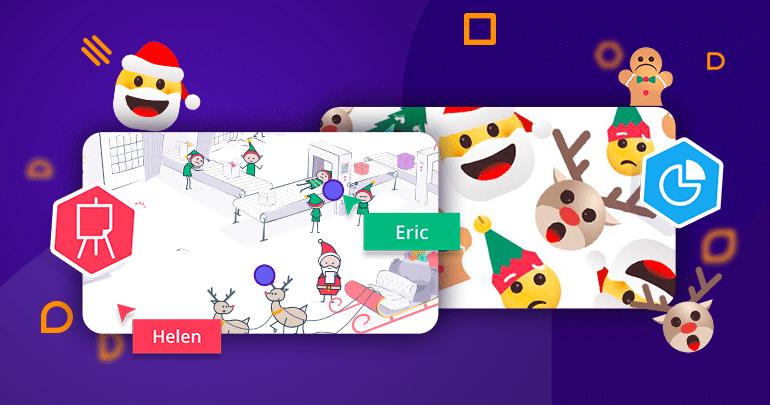Is it possible for companies to become more inclusive? Inclusion and diversity are becoming increasingly prevalent in French companies, with the aim of ensuring that employees have equal access to all aspects of the company without discrimination.
Inclusion and diversity also encompass inclusive management, a concept that was popularized by American multinationals in response to growing legal and regulatory pressure against all forms of discrimination.
Inclusive management involves valuing the contributions of diverse individuals, such as those from different backgrounds or with disabilities, through policies of equal treatment. As such, managers are responsible for implementing these policies and ensuring fair working conditions for all employees.
The ultimate goal of inclusive management is to combat discrimination based on factors such as disability, age, social or cultural background, gender, sexual orientation, or physical appearance.
1. The advantages of inclusive management for a company:
The advantages of inclusive management for a company are numerous. It leads to increased employee engagement and reduced stress levels, as employees feel more invested in decision-making processes (Jonasson, Lauring, and Guttormsen, 2018).
Inclusive management promotes the adaptation of individuals to the demands of the environment and their engagement, which can reduce stress levels, depending on their needs and situations (Butts et al., 2009). In addition, it leads to better communication and involvement of employees in the dialogue within the company (Noorliza and Asaari, 2006).
Furthermore, a study by Deloitte, published in January 2020, revealed that inclusive management can lead to sustainable performance for companies. Organizations that practice it can generate up to 30% more revenue, and it also helps to develop the company’s brand image.
2. The advantages of inclusive management for employees:
As for employees, implementing an inclusive policy within the company would foster a sense of belonging, and create an environment where psychological safety is present and where they can express their opinions and disagreements without fear. This allows them to be more creative and propose innovative solutions. Inclusive management also helps to maintain employee engagement and attachment to the company, which reduces absenteeism and turnover.
Furthermore, reinforcing the sense of competence and autonomy of the team is a powerful motivator for employees. Even when faced with contextual challenges, inclusive leadership ensures that they will remain motivated and engaged.
3. Inclusive management: the benefits for managers:
Inclusive management has become a key driver for performance and transformation, and human resources professionals are fully aware of its importance. However, managers need to possess the necessary skills to effectively implement inclusion.
Inclusive management is a powerful tool that promotes new ways of achieving individual and organizational goals. It has been proven that having a diverse team improves decision-making, innovation, and overall performance.
Diversity brings with it the richness of different experiences, knowledge, and skills, but can also lead to conflicts of opinion. In such situations, an inclusive leader must foster an open and tolerant environment where all team members feel free to express themselves and be heard. Additionally, they must trust in the potential of their team members.
How to implement it with Beekast?
Beekast is a tool that enhances collaboration and collective intelligence in meetings. To achieve this, here are three activities that involve all team members:
- The Dotmocracy is an activity template modeled after democratic principles. It allows participants to vote on a set of ideas and allocate a certain number of points to the ideas they prioritize the most.
To avoid influencing others, participants do not see each other’s votes until the session is over. Once the voting is complete, the group can then discuss the most prominent results.
- The Six thinking hats encourage group brainstorming on a specific problem by embracing all forms of thinking. Participants can generate ideas individually or in groups, by donning different “thinking hats” which symbolize different modes of thinking. This activity minimizes the influence of criticism and judgment while fostering group expression in a fun and creative way.
- The rocket template facilitates the collective establishment of objectives, expectations, and the planning of necessary tools to achieve those objectives. This activity enables you to present the problem to your team, and what you expect of them, without any evaluation of the ideas shared.
After this, you can explain the different categories:
- The goal: the purpose of the mission that will be accomplished as a team;
- The strategy: the means by which the mission will be executed;
- The context: the means made available to them to succeed in this project.
Participants will have a five-minute period to contemplate the topic. After that, they will submit their ideas in various categories. It’s important to have a clear time frame for each phase to ensure that the activity is completed within the allotted time.

